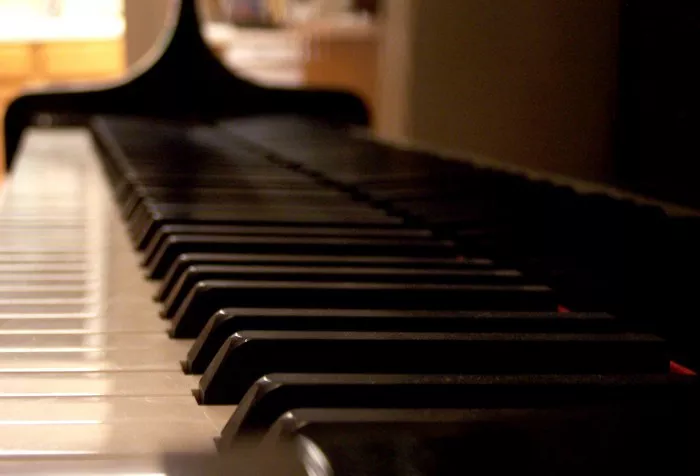The piano, with its vast range and expressive capabilities, is a versatile instrument that forms the backbone of various musical genres. Understanding the fundamental building blocks of piano chords is essential for any aspiring pianist. In this comprehensive guide, we delve into the world of major chords on the piano, exploring their structure, sound, and how they contribute to the harmonic richness of music.
I. Introduction to Major Chords
Major chords are a foundational element in Western music, known for their bright and uplifting sound. A major chord is constructed using a specific pattern of intervals, creating a harmonious blend of notes that evoke a sense of resolution and stability. In the context of piano playing, major chords serve as the cornerstone for countless melodies and progressions.
II. Structure of Major Chords
To understand major chords on the piano, it’s crucial to grasp their structural components. A major chord consists of three notes played simultaneously – the root, the major third, and the perfect fifth. Let’s break down these elements:
A. Root Note
The root note is the foundation of the chord and determines its tonal center. In a major chord, the root is the primary note that gives the chord its name. For example, in the C major chord, C is the root note.
B. Major Third
The major third is the interval between the root and the third note of the chord. In a major chord, this interval is a major third, comprising four half steps. The major third contributes to the chord’s bright and consonant quality.
C. Perfect Fifth
The perfect fifth is the interval between the root and the fifth note of the chord. In a major chord, this interval is a perfect fifth, consisting of seven half steps. The perfect fifth adds a sense of stability and completeness to the chord.
III. Major Chords in Different Keys
Major chords can be constructed in any key, allowing for a diverse range of tonalities. Understanding how to form major chords in different keys is essential for navigating various musical compositions. Here are a few examples of major chords in different keys:
A. C Major Chord
In the key of C major, the C major chord is formed by combining the notes C (root), E (major third), and G (perfect fifth). This chord is often considered the most straightforward major chord on the piano.
B. G Major Chord
Moving to the key of G major, the G major chord consists of the notes G (root), B (major third), and D (perfect fifth). It shares the same major chord structure but features different notes.
C. F Major Chord
In the key of F major, the F major chord is created by combining the notes F (root), A (major third), and C (perfect fifth). Each major chord maintains the consistent pattern of root, major third, and perfect fifth.
IV. Playing Major Chords on the Piano
When playing major chords on the piano, it’s essential to develop proper finger technique and hand positioning. Here are steps to guide you through playing major chords:
A. Finger Placement
Place your hand over the piano keys with your fingers relaxed and slightly curved. For a C major chord, position your thumb on C, your middle finger on E, and your pinky on G. Adjust finger placement accordingly for different keys.
B. Hand Position
Maintain a balanced hand position with your wrist level and fingers aligned over the keys. This helps with accuracy and fluidity when playing major chords.
C. Practice Smooth Transitions
Practice transitioning between major chords smoothly. Gradually increase the speed as you become more comfortable with the finger movements. Consistent practice is key to developing muscle memory.
V. Application of Major Chords in Music
Major chords play a central role in shaping the emotional tone of a piece of music. Their bright and consonant quality makes them suitable for conveying a range of emotions, from joy and celebration to introspection. Here’s how major chords are commonly used in music:
A. Establishing Key Tonality
Major chords are often used to establish the tonality or key of a musical piece. The opening chords of a composition frequently include the tonic major chord, providing a clear indication of the key in which the music will unfold.
B. Creating Melodic Progressions
Major chords contribute to melodic progressions by providing a sense of resolution. Progressing from one major chord to another creates a harmonically pleasing journey, adding depth and structure to the music.
C. Conveying Positive Emotions
Major chords are associated with positive emotions such as happiness, triumph, and optimism. Composers often use major chords to convey uplifting and joyful sentiments in their musical creations.
VI. Experimenting with Major Chord Variations
While the standard major chord consists of the root, major third, and perfect fifth, musicians often experiment with variations to add color and complexity to their playing:
A. Major Seventh Chords
Introducing the major seventh creates a major seventh chord, characterized by a dreamy and jazzy sound. For example, in the key of C major, the major seventh chord includes the notes C, E, G, and B.
B. Major Ninth Chords
Adding the ninth interval to a major chord results in a major ninth chord. This chord has a rich and expansive quality, often used in jazz and contemporary music. In C major, the major ninth chord includes the notes C, E, G, and D.
See Also: The Most Expensive Steinway Piano: What You Need To Know
VII. Conclusion
In conclusion, major chords on the piano form the backbone of harmonies in Western music. Understanding the structure, playing techniques, and applications of major chords is foundational for any pianist. As you embark on your musical journey, delve into the expressive world of major chords, experiment with variations, and discover the endless possibilities for creating beautiful and emotive compositions.


